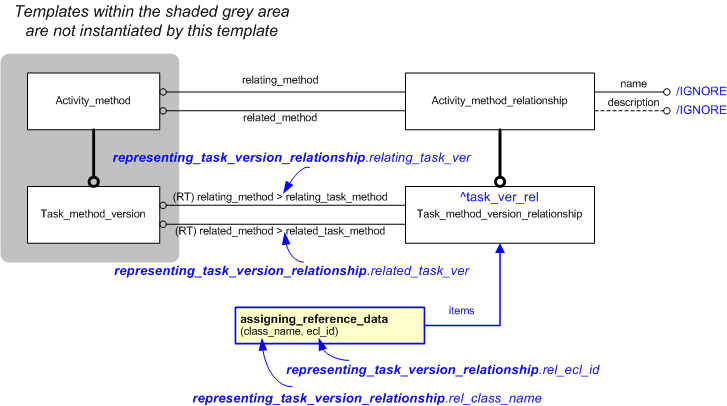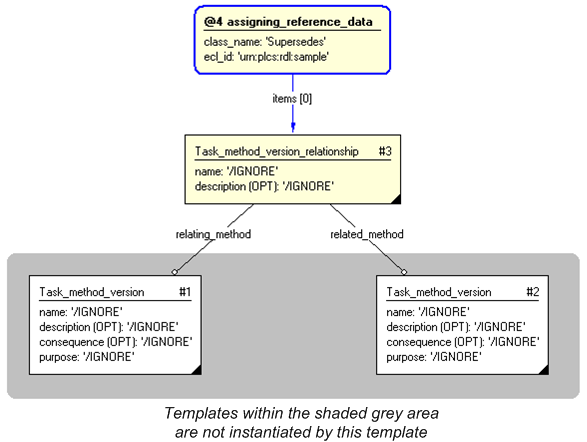| Template:— representing_task_version_relationship (rep_task_ver_rel) |
Date: 2009/03/10 07:33:45
Revision: 1.4
|
This section specifies the template representing_task_version_relationship.
NOTE
An explanation of a template and the associated instantiation path is
provided in the
Template overview
section.
The EXPRESS-G diagram in
Figure
1
shows the templates and EXPRESS entities that are required
to represent the template
"representing_task_version_relationship".
The text highlighted in blue shows the template parameters.
Figure 1 — An EXPRESS-G representation of the Information model for representing_task_version_relationship
The graphic for the template to be used in other EXPRESS-G diagrams
is shown in Figure
2
below.
Figure 2 — The graphical representation of the representing_task_version_relationship template
The following input parameters are defined for this template:
The following classes and their sub-classes can be used:
The identifier of the
External_class_library
storing the definition of the class referenced by the parameter @rel_class_name.
The following reference parameters are defined for this template:
%^target = $representing_task_version_relationship.task_ver_rel%
The following parameter combinations specify a uniqueness constraint:
Unique constraint: Task version relationship
The instantiation path shown below specifies the entities that are to be
instantiated by the template.
A description of templates and the syntax for the instantiation path is
provided in the
Templates Help/Information section.
The following entities are instantiated with attributes as specified:
The instance diagram in Figure
3
shows an example of the EXPRESS entities and templates that are instantiated by the template:
/representing_task_version_relationship(relating_task_ver='#1', related_task_ver='#2', rel_class_name='Supersedes', rel_ecl_id='urn:plcs:rdl:sample')/
(an illustration of the consolidated representing_task_version_relationship template is shown in
Figure
4 below.)
Figure 3 — Entities instantiated by representing_task_version_relationship template
The instance diagram in
Figure
4
shows the graphic symbol for the template that is to be
used in other instance diagrams. The example template is:
/representing_task_version_relationship(relating_task_ver='#1', related_task_ver='#2', rel_class_name='Supersedes', rel_ecl_id='urn:plcs:rdl:sample')/
Figure 4 — Instantiation of representing_task_version_relationship template
Characterizations
No common characterizations of the template
representing_task_version_relationship
have been identified. However, the ISO 10303-239 EXPRESS model
may enable other assignments to the entities instantiated by the template.




